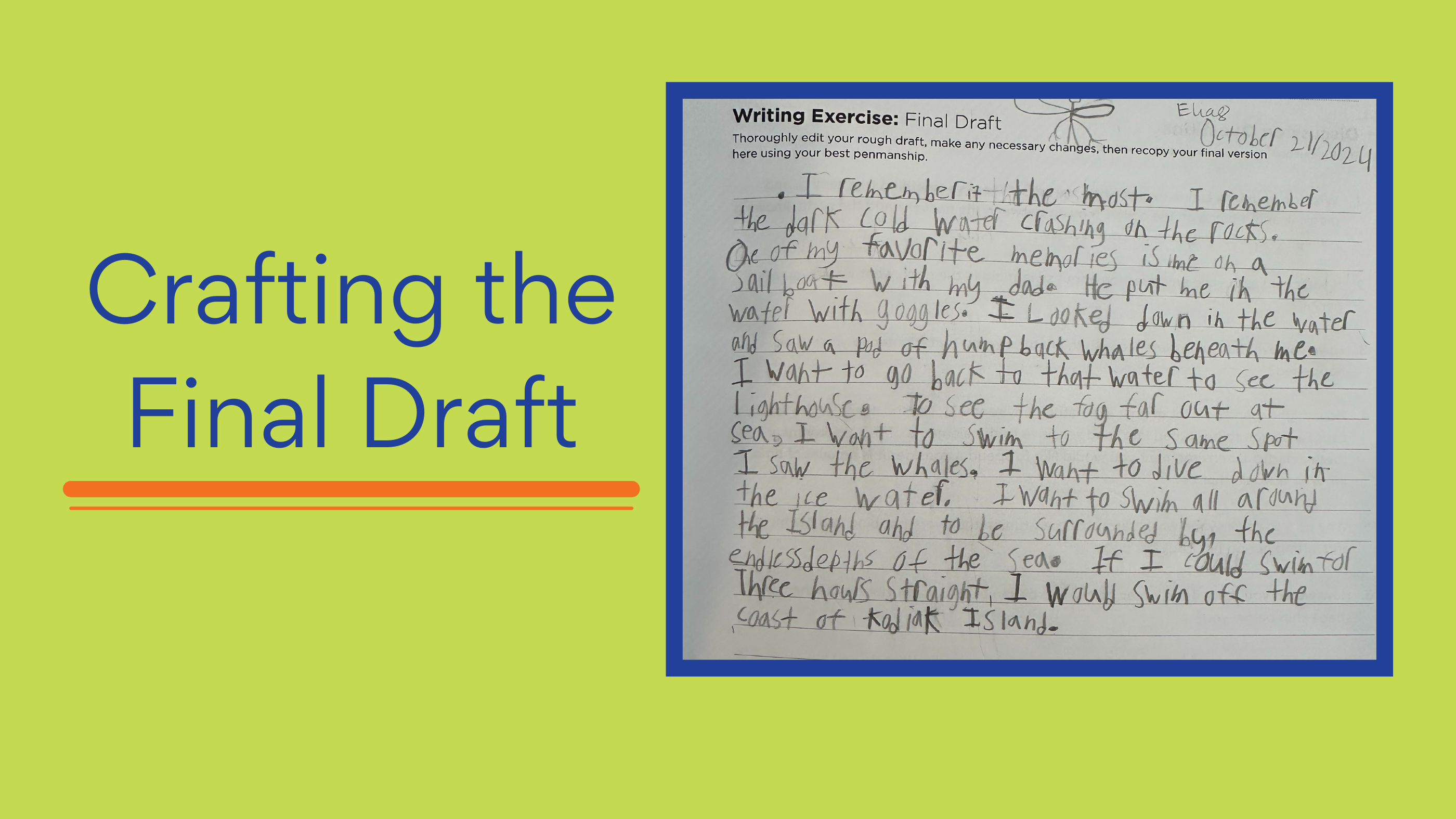
I imagine this fifth grade student is full of all sorts of interesting ideas. As I began to read the rough draft, my first thoughts were not the spelling errors or mechanical issues. What caught my attention was this young writer’s ability to describe the scene and create a mood. The function of his passage was working, his form needed the support of the 5-minute conference to elevate his idea—Form follows Function.
What’s wonderful about the weekly writing exercise is that it provides an opportunity for the student to write an idea tied to the weekly reading. This young writer’s lovely memoir paragraph is inspired by Grayson, Lynne Cox’s retelling of a fantastic ocean experience. What’s even more wonderful about the weekly writing exercise is that it provides an opportunity for the student to engage in all the stages of writing—brainstorm an idea, draft the idea, re-read and conference the idea with a teacher, polish the idea. During the 5-Minute Conference, the mid-point in the writing process, students will be engaging in the authentic process of REAL writing.
This weekly activity—re-reading and conferencing with a teacher—will teach many obvious writing techniques in one fell swoop:
-
Correcting spelling errors
-
Spacing well between words and end marks
-
Keeping capitalization standardized
-
Using end marks properly
-
Ordering ideas in a linear manner
This particular 5-minute Conference offered an opportunity to demonstrate that sometimes the HOOK—that first sentence that draws the reader into the writing, is often found mid paragraph and that the very sentence written sometimes falls best at the end. Demonstrating that rough drafts are like putty, with tremendous potential to be reshaped to elevate the idea.
Sometimes the 5-Minute-Conference is accomplished side-by-side with the student, but other times the teacher might read and make edit marks before sitting with the student to communicate suggestions.
After the 5-Minute Conference, the student makes all the corrections and changes. It is important to note that in the process of making changes and creating a polished draft (the last stage in the writing process), the student is learning to spell, learning to form letters more beautifully, learning to hear the rhythm of words and phrases. As the student engages in the stages of the writing process, the student is becoming a REAL writer.

This student was not bogged down by the many spelling errors, was open to the idea of rearrangement, and the outcome is tremendous. I think Lynne Cox would smile reading this poetic descriptive memoir paragraph inspired by her story.
I remember it the most. I remember the dark cold water crashing on the rocks. One of my favorite memories is me on a sailboat with my dad. He put me on the water with goggles. I looked down in the water and saw a pod of humpback whales beneath me. I want to go back to that water to see the lighthouse. To see the fog far out at sea. I want to swim to the same spot i saw the whales. I want to dive down in the ice water. I want to swim all around the island and to be surrounded by the endless depths of the sea. If I could swim for three hours straight, I would swim off the coast of Kodiak Island.
~Kimberly
